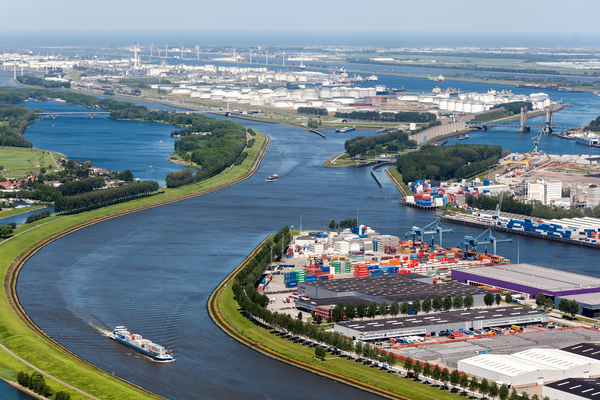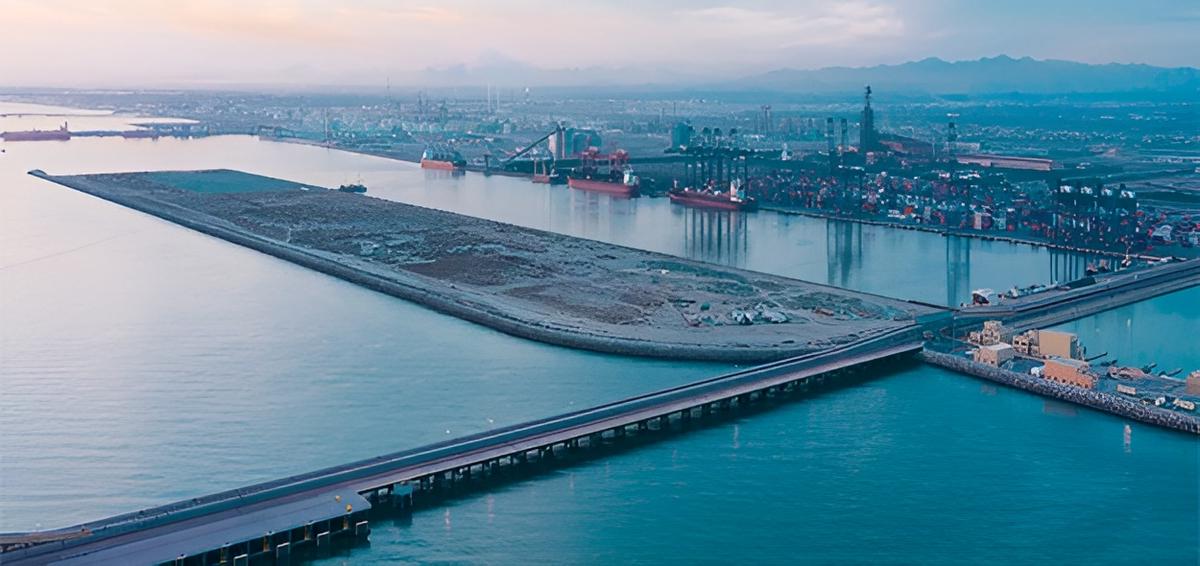East of Suez Fuel Availability Outlook 25 Nov
South Korean ports might face weather disruptions
HSFO availability tight across several Japanese ports
Prompt availability tight across all grades in Fujairah
 IMAGE: Tokyo Bay at sunset. Getty Images
IMAGE: Tokyo Bay at sunset. Getty Images
Singapore and Malaysia
VLSFO lead times in Singapore remain uneven, stretching from about five days to as long as 11 days — a slightly narrower range than last week’s 2–10 days. HSFO availability is steady, with suppliers still asking for 6–9 days’ notice, while LSMGO requirements hold unchanged at 2–8 days.
Singapore’s residual fuel oil stocks have averaging 4% higher this month compared with October, Enterprise Singapore’s latest figures show. Fuel oil inventories have climbed to nearly 25 million bbls, supported by a 5% rise in net fuel oil imports so far in November. Even so, both inflows and outflows have declined. Imports are down by 1.04 million bbls, and exports have dipped slightly more, by 1.18 million bbls.
Meanwhile, middle distillate stocks have edged down, averaging 1% lower this month.
Over in Malaysia’s Port Klang, VLSFO and LSMGO remain readily available — especially for smaller prompt parcels — while HSFO continues to face limited supply.
East Asia
Bunker demand in Zhoushan remains subdued, with suppliers now pointing to delivery dates in early December for all grades. That contrasts with last week’s guidance of about 4–6 days.
Rough weather is adding to delays. Bunkering at Zhoushan’s outer and inner anchorages has been suspended since Tuesday morning amid 21–25 knot winds and swells of roughly one metre. Operations are expected to restart on Wednesday when conditions ease.
In Hong Kong, lead times for all grades continue to hover at around seven days. Taiwan’s bunker supply is stable as well, with VLSFO and LSMGO typically available within two days at Keelung, Taichung, Hualien and Kaohsiung.
Bunker demand in South Korea remains sluggish, and suppliers are now offering prompt lead times of about two days for all grades, narrower than last week’s 4–7-day range.
Weather conditions are set to add pressure. Busan, Ulsan and Yeosu are expected to face disruptions from 25 November–1 December and again on 3 December. Daesan is likely to be affected on 25 November and from 27 November–1 December, as well as on 3 December, a trader said.
In Japan, prompt VLSFO remains tight at key ports including Tokyo, Chiba, Yokohama, Kawasaki, Osaka, Kobe, Sakai and Mizushima. LSMGO supply is generally steady, but prompt deliveries in Mizushima are difficult to secure.
B24-VLSFO is only available on request in Tokyo, Chiba, Kawasaki and Yokohama. HSFO has tightened across most ports. Nagoya, Yokkaichi and Tokuyama are short of all grades.
A fire at Idemitsu Kosan’s Yokkaichi refinery on Friday halted production, leaving inventories extremely low. The company has reportedly cancelled around half of its existing orders and is rejecting new ones. As a result, supply in Nagoya is expected to remain tight into December, affecting nearby ports such as Yokkaichi, Kinuura, Toyohashi, Taketoyo and Matsuzaka, according to a source.
In Vietnam, truck-delivered LSMGO and HSFO in Nha Trang and Quy Nhon typically require around three days of lead time. The same grades are also available by truck in Cua Lo, Nghi Son, Vung Ang, Son Duong and Hon La, a supplier said.
In Indonesia, VLSFO availability remains steady in Jakarta, Surabaya, Balikpapan and Cigading, with lead times of 3–5 days. LSMGO follows a similar pattern in Jakarta, Benoa, Surabaya and Batam, and HSFO remains well supplied in Jakarta, Surabaya and Balikpapan, a trader noted.
Oceania
In Western Australia, VLSFO and LSMGO remain readily available at Kwinana and Fremantle, with suppliers generally working on seven-day lead times. Most deliveries are made by barge from a single supplier, though LSMGO can also be trucked in. Strong afternoon winds still interrupt operations from time to time.
In New South Wales, Port Kembla can deliver VLSFO by both truck and pipeline, with pipeline runs starting at 70 mt and smaller volumes handled by truck. Sydney has one operating barge and also delivers by truck and pipeline at select berths, but schedules often shift around naval and cruise traffic. VLSFO and LSMGO stocks remain healthy, while HSFO remains tight. Suppliers typically advise around seven days’ notice.
Seasonal cruise activity is expected to rise between December and February in Sydney, Cairns and Darwin, which could add pressure.
Brisbane and Gladstone in Queensland continue to offer VLSFO and LSMGO with seven-day lead times. HSFO is only available in Brisbane on request, and Gladstone still sees occasional weather disruptions. Access to Brisbane’s AAT terminal remains challenging. Two barges now operate in Brisbane under different suppliers, both offering VLSFO and LSMGO, with HSFO supplied on enquiry.
Suppliers in Victoria's Melbourne and Geelong hold strong stocks of VLSFO and LSMGO, though HSFO remains tight for prompt liftings. Melbourne currently has adequate HSFO availability. Both ports rely on a single barge, and Bass Strait weather can delay schedules. Seven-day lead times remain standard. LSMGO can also be delivered by truck to smaller ports such as Portland and Port Welshpool within 2–3 days.
Across Australia, bunker availability is broadly stable, with seven days’ notice still the norm. Deliveries within 3–4 days are often possible thanks to robust supply. Even in ports with pipelines, including Darwin and Dampier, suppliers still use trucks to supplement deliveries. Tropical Cyclone Fina passed Darwin on Monday, but bunker operations had resumed by Tuesday.
In New Zealand, supply remains steady. VLSFO is widely available at Tauranga and Auckland, with pipeline access at specific Tauranga berths. Marsden Point can supply both VLSFO and LSMGO by pipeline to cargo vessels. Northern Australia’s cyclone season, running from November to April, is expected to bring occasional disruptions.
South Asia
In Sri Lanka, a supplier is now quoting lead times of about five days for all grades at both Colombo and Hambantota, up from last week’s 1–2 days. However, Colombo is expected to see weather-related disruptions to bunkering between 25–29 November.
In Pakistan, Port Qasim and Karachi both have ample VLSFO and LSMGO, with lead times of around five days. Prompt options are also available, a source said.
Middle East
Prompt bunker supply in Fujairah remains tight across all grades, with low stocks and loading delays persisting even as demand stays soft. Suppliers continue to advise lead times of 5–7 days, similar to nearby Khor Fakkan.
In Iraq’s Basrah, VLSFO and LSMGO are still easy to secure, while HSFO remains in short supply. Saudi Arabia’s Jeddah has seen improved availability of VLSFO and LSMGO, though port congestion continues to slow deliveries.
Egypt’s Port Suez is facing the opposite situation, with VLSFO, LSMGO and HSFO almost fully depleted. Qatar’s Ras Laffan is also tight on VLSFO and LSMGO, and Djibouti is under heavy strain, with VLSFO and HSFO nearly exhausted and LSMGO close behind.
Oman’s ports — Sohar, Salalah, Muscat and Duqm — remain stable, offering dependable LSMGO supply with prompt delivery dates.
By Tuhin Roy
Please get in touch with comments or additional info to news@engine.online






